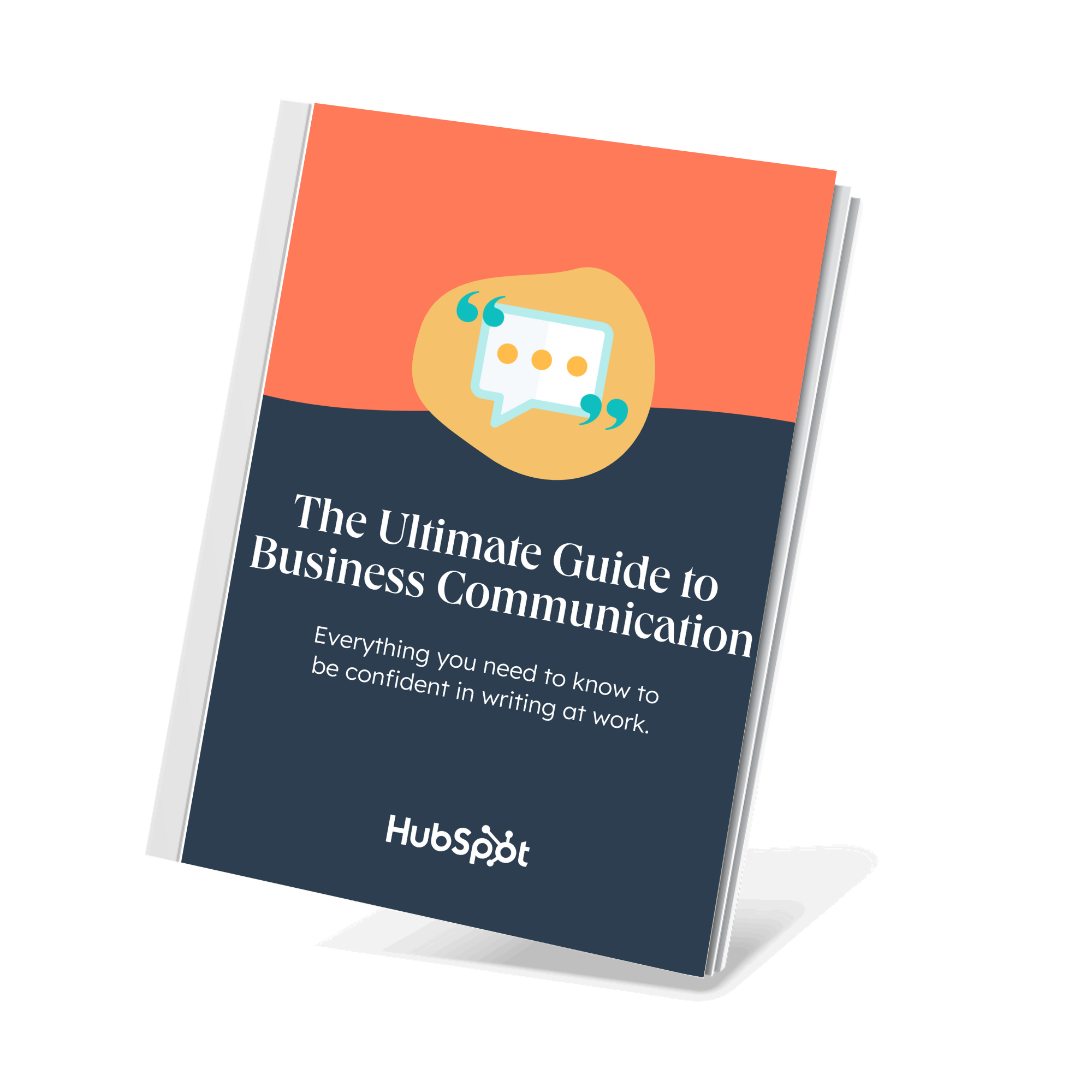Protect your data
This site uses cookies and related technologies for site operation, and analytics as described in our Privacy Policy . You may choose to consent to our use of these technologies, reject non-essential technologies, or further manage your preferences.
- Resume and Cover Letter
- Perfect Cover Letter...

Perfect Cover Letter Salutations: Start Strong
11 min read · Updated on April 24, 2024

Greet your future employer professionally with these cover letter salutations
Cover letters – some recruiters love them; some recruiters hate them. Unfortunately, you'll rarely know which type of recruiter you're contacting, so the safest bet is always to send one, just in case.
The aim of a cover letter is to make the reader want to find out more about you, so in this article, we're looking at starting strong.
Which are the best cover letter salutations to make a great first impression?
What is a cover letter salutation?
When we say “salutation,” we mean the opening line of the letter where you greet the person you're writing to. For example, when you write to thank your aunt for the jumper she knitted for Christmas, you might use “Dear Aunt Betty” as your salutation. These days, the salutation may refer to the opening of an email as much as to the opening of a handwritten or printed letter.
While cover letter salutations generally refer to the opening line of your epistle, some people also refer to the sign-off as a salutation as well, so we'll look at that at the end of the article.
Considerations when choosing cover letter salutations
A cover letter is a formal business document that you use to try to make yourself more memorable. Remember, though, you want to be remembered for the right reasons and not the wrong ones!
Starting your letter “Yo!” or “Hey” doesn't convey the impression of a competent professional who knows the unspoken rules of office writing etiquette.
While not everyone is a natural writer, relying instead on personality, speech, and body language, cover letters depend very much on the written word. In fact, a cover letter, along with your resume, is part of your personal sales brochure. You need to choose the right words to sell yourself effectively.
Stick to these guidelines, and you can't go far wrong.
Keep it formal and professional
Your tone should be aligned with the tone you'd use when speaking to a teacher, religious leader, or grandma, not the tone you'd use with your mates or kid brother. This is the first impression you'll make on your potential employer, so it's important to show that you can communicate professionally , with respect, and in line with workplace norms.
Personalize wherever possible
Bonus points if you know, or can find out, the name of the person who will be reading the letter. If you can address them by name, you're instantly showing that you've made the effort, done your research, and have taken the time to write a personalized letter rather than firing the same one off to multiple vacancies.
Always use a salutation
Even if you can't find out the recipient's name, never leave the greeting line blank. It conveys the impression of someone who lacks attention to detail or is just plain lazy. Not a great impression to create on someone you need to impress!
This doesn't just apply to the cover letter salutation but to the entire document. Punctuation is important as it enables your reader to accurately interpret your meaning. Use capital letters for names and add a comma after the salutation. Get a trusted friend or family member to check over your letter when it's written to help you give it the polish it needs.
Options for cover letter salutations
Let's take a look at some different salutations you could use on your cover letter.
Dear Mr Donnelly
Addressing the hiring manager by name is the ideal option. If it's not given in the job posting or provided by the person connecting you, it's fine to resort to good old Google. You may find their name on the company website or be able to track them down on LinkedIn. It's also perfectly acceptable to contact the company directly and ask them who you should address your application to.
If you're lucky enough to know the name of the hiring manager, you should always use it in the cover letter salutation. Bear these considerations in mind, though:
Double and triple check the spelling – even the most common names sometimes have unconventional spellings
Default to “Mr,” “Mrs,” or “Miss” plus their surname and use the generic “Ms” if you're not sure whether “Mrs” or “Miss” would be most appropriate
Reflect the gender-neutral title “Mx” if that's what you find online or on the job advert
Dear Doctor Foster
If the recipient has a professional title, it's recommended you use that instead of “Mr,” “Mrs,” or “Miss.” Examples could include “Dear Professor Dumbledore,” “Dear General Eisenhower,” or “Dear Doctor House.”
While the formal “Dear Ms Farrell” is the preferred and most formal option, if you only have the hiring manager's first name, it's perfectly acceptable to use it to open the letter. Again, check the spelling. A slightly less formal salutation here isn't a reason to take a less formal tone throughout the rest of the letter, however. This is a suitable salutation for a job application email, as you can get away with a slightly more relaxed approach in an email.
Dear HR team
If you need a greeting for a cover letter to an unknown recipient, this is a popular option. It's not ideal, but your letter is likely to be forwarded to the right department at least. If you can't find the name of the hiring manager, this is a viable Plan B.
Dear hiring manager
This is an alternative cover letter greeting when you have no name available. It's better than leaving a blank space, but it's far from warm and personal. Additionally, your letter may not find its way to the right person if the company has different teams hiring for different roles. Try to avoid this unless you've run out of other options.
Dear Sir / Madam
This cover letter salutation is falling out of favor. It's not just impersonal; it doesn't even address a specific team or department. Still, it's better than an overly casual greeting or a blank space.
How NOT to address a cover letter
As we've already said, there are some greetings that are just too informal to use as cover letter salutations. There are others, however, that tread a very fine line. We'd advise avoiding these openings, as they're either too colloquial or too stuffy.
To whom it may concern
We're not in the 19th century anymore. Trim your whiskers and relegate this stuffy greeting to history, it's too impersonal even for the most uptight offices.
Using “dear” on its own, with no name or further greeting attached, gives the wrong vibe. It sounds like a combination of your old aunt, someone unfamiliar with the English language, and someone who's forgotten to fill in a blank on their template. Literally, anything is better than nothing after the word “dear.”
Hi, hello, hi there!
While these cover letter salutations certainly aren't stuffy or over-formal, they fall too far in the other direction. They're friendly and casual but too much for an initial introduction. Save these for the interview.
Expert tip: Read this article to find out more about cover letter mistakes to avoid: 10 of the Worst Cover Letter Mistakes to Avoid
Cover letter closing salutations
How you end is just as important as how you begin. After all, you want to end on a high! Before you come to an abrupt end, you'll want to do both of these things:
Thank the reader for their time and consideration
Add a call to action, for example, directing them to look at your resume or give you a call
Cover letter salutations to close
You've started strong and used the body of the email to convince the hiring manager that you're the ideal candidate for the role. Now, it's time to choose your sign-off.
Yours sincerely, yours truly
These two phrases should be your go-to sign-offs for a formal business letter. If you've started your letter with the recipient's name, choose sincerely; otherwise, choose truly.
Best regards, kind regards, regards
These are all acceptable closing phrases but better suited to an email than a full letter. They veer towards the casual and aren't generally considered the best letter-writing etiquette.
Respectfully
This is a polite way of signing off a letter, although not especially conventional or formal. While it's better than no closing at all, it would be wiser to choose a more formal option.
How NOT to sign off a cover letter
Just as there are ways not to start a cover letter, there are ways not to sign off.
Well, it's polite but way too informal. “Thank you” would be better, but a line within the body of the letter saying that you appreciate the time they take to consider your application would be best.
Just no. You're not taking leave of a friend you've just dropped in on; you're addressing your potential future employer. A more formal and respectful tone is needed.
However you choose to end your cover letter, remember to finish with your name – and leave space above to sign it if you intend to print it out.
Cover letter examples
Below you'll find two cover letter examples with strong salutations, one a traditional letter and one an email, that you can use for inspiration.
Traditional cover letter example
Dear Ms Searle,
Re: Sales Manager vacancy
Having seen your advertisement for a Sales Manager on LinkedIn, I would like to outline my professional experience and strong track record. I believe I can make a very significant contribution to Acme Corp.
In addition to extensive experience in a sales environment, I also have a commitment to delivering exceptional customer service and a proven ability to meet targets. As you will see from my enclosed resume, I am a natural people person, communicating effectively with a diverse range of people and demonstrating excellent negotiation and influencing skills. My leadership abilities mean that I am able to successfully engage and motivate teams – my current team has surpassed its Q1 targets by 23%.
I am driven, ambitious, and keen to progress my career in a growing and innovative business such as Acme Corp. I am confident that my strong work ethic, combined with my sales results and integrity, will enable me to play a key role in your success.
Please do not hesitate to call me at 555-555-5555 so we can arrange an interview to discuss my application in greater depth. I appreciate your consideration.
Yours sincerely,
Email cover letter example
Dear Liz,
Re: Assistant Security Manager vacancy (ref: 12345)
Having read your advertisement for an Assistant Security Manager with interest, I am writing to outline my extensive professional experience. I believe that I possess the talents necessary to make a positive contribution to your hotel.
I have a comprehensive understanding of security and a commitment to exceptional service. As a Police Officer, I led teams of up to 6 personnel, overseeing security patrols and managing performance. Colleagues would recommend me for my ability to build and motivate teams to achieve exceptionally high standards and positive outcomes.
As a manager, I take pride in providing training and development opportunities across the team to improve individual skill levels and ensure the achievement of organizational objectives.
The position at Acme Hotel is particularly appealing to me as I believe it will make the best possible use of my security and leadership skills whilst providing opportunities for further development.
Please do not hesitate to call me at 555-555-5555 so we can arrange an interview to discuss my application in greater depth. I appreciate your consideration of my application and look forward to hearing from you.
Best regards,
Choose the right cover letter salutations to set the right tone
As you can see, there are several options for opening and closing a cover letter. Make sure you choose one that is professional, has the right amount of formality, and shows you understand corporate communication.
At TopResume, we create impactful resumes that land jobs. If you need help with your cover letter, we can do that, too! Why not contact us for a strong start on your journey towards a new career?
Recommended reading:
Resume vs Cover Letter: How They're Different
What is the perfect cover letter length?
How to Tailor Your Cover Letter for Each Job Application
Related Articles:
How to Maximize Your Resume Action Words to Wow the Employer
Resume Spelling and Accent Explained
Guide to Writing a Great Resume with No Work Experience
See how your resume stacks up.
Career Advice Newsletter
Our experts gather the best career & resume tips weekly. Delivered weekly, always free.
Thanks! Career advice is on its way.
Share this article:
Let's stay in touch.
Subscribe today to get job tips and career advice that will come in handy.
Your information is secure. Please read our privacy policy for more information.
We use cookies to collect information about how you use the National Careers Service. This information is used to make the website work as well as possible and improve our services.
You’ve accepted all cookies. You can change your cookie settings at any time.
beta Complete an independent survey to give us feedback about our website.
- Careers advice
- Cover letters
There is a problem
How to write a cover letter.
A cover letter introduces you to an employer and asks them to think about your application.
It’s a short letter, usually 3 to 5 paragraphs long.
When to include a cover letter
You should always include a cover letter when you apply for a job using a CV.
You can write it as an email if you’re applying online or print a copy to go with a paper application.
When writing a cover letter, let the employer know you’re keen by showing that you’ve researched the company. Learn more about what they do through:
- their website
- recent news articles
- talking to people you know who work there
Send it to the right person
It's important to try to address your cover letter to someone by name. Check you have the details of the person you need to send it to.
You'll need their name and preferred title. For example, ‘Dr’, ‘Mr’, ‘Mrs’, ‘Ms’, and their job title. You should also make sure you have the right company name and address, including postcode.
If you do not know their name
If the job advert does not include a name you can check the company website. Try to find details of the head of the department, head of human resources or a recruitment manager.
If you still cannot find a name, you can start your letter with ‘Dear Sir or Madam’.
Introduction
Introduce yourself and explain how you found the advertised job. You can mention the job title, and reference number if there is one.
If you’re asking about any job openings and not applying to a vacancy, tell them what sort of job you’re looking for. Let the employer see how keen you are to work for them.
Show you're right for the job
Highlight the skills and experience you have that match what the employer is looking for.
Convince them that you're enthusiastic about working for them. Let them know you share their work values, culture and style.
Give extra information
If you have gaps in your employment history, you could talk about the skills you gained while you were out of work.
If you’ve mentioned on your CV that you have a disability, you might want to talk more about this in your cover letter. Organisations like Disability UK can give you advice on how to do this. You do not have to mention your disability at this stage if you prefer not to.
You can get more help with specialist advice on finding work if you have a disability.
Ending your cover letter
Thank the employer for considering your application. Let them know that they can get more details from your CV, and tell them you're looking forward to hearing from them.
Let them know how they can best contact you. Make sure your contact details are correct on both your cover letter and CV.
Yours sincerely or yours faithfully
If you know the name of the person you’re writing to, you should end the letter with ‘Yours sincerely’.
If you’ve addressed the letter ‘Dear Sir or Madam’, you should end the letter with ‘Yours faithfully’.
Tips for writing a cover letter
When writing your cover letter, remember to:
- write a new one for every job you apply for and make sure it’s tailored to the company and the specific role
- use the same font and size as you do for your CV, so it looks consistent
- make sure the company name and recruiter’s details are correct
- use the right language and tone: keep it professional and match the keywords used by the employer in their job advert
- show you’ve done your research into the job and the company
- highlight your most relevant skills and experience to stand out from other applicants
- back up any statements you make with facts and use the STAR method
- double check spelling and grammar before you send it
- keep a copy of your cover letter as they may ask you about it in an interview
Related content
How to write a CV
Completing application forms
Interview tips
Speak to an adviser
You can call 0800 100 900 or use webchat to speak to an adviser.
We're open:
- 8am to 8pm Monday to Friday
- 10am to 5pm Saturdays and bank holidays
We're closed on Sundays, Christmas Day and New Year's Day.
Rate your experience
How satisfied are you with the website?
Have a thesis expert improve your writing
Check your thesis for plagiarism in 10 minutes, generate your apa citations for free.
- Knowledge Base
- Effective communication
- Dear Sir or Madam | Alternatives & When to Use
Dear Sir or Madam | Alternatives & When to Use
Published on 17 December 2022 by Jack Caulfield . Revised on 26 June 2023.
Dear Sir or Madam is a standard salutation used to start an email or letter to a person whose identity you’re not sure of. Though it’s a traditional phrasing, it’s recommended to avoid it if possible since it’s very impersonal and quite old-fashioned.
It’s always best to address the person directly by name if you can find out this information. If not, other options include using the name of the group or department, the person’s job title, or, if you’re not addressing one specific person, ‘To Whom It May Concern’.
Dear Department of Communications, …
Instantly correct all language mistakes in your text
Be assured that you'll submit flawless writing. Upload your document to correct all your mistakes.

Table of contents
Alternatives to dear sir or madam, dear sir or madam vs to whom it may concern, why should you try to avoid dear sir or madam, how to use dear sir or madam correctly.
The best alternative to ‘Dear Sir or Madam’ is always to address the specific person you’re writing to by name. You can either use their full name or a title like ‘Ms’ or ‘Mr’ followed by their last name . In more informal contexts, you might just use their first name .
Dear Dr Fontana, …
Try your best to find out the name of the person you’re writing to, but, of course, there will be situations where you just don’t know. In these cases, other information can stand in to make your salutation more specific: the name of the department you’re writing to or the job title of the person in question.
Dear Editorial Board, …
The only proofreading tool specialized in correcting academic writing
The academic proofreading tool has been trained on 1000s of academic texts and by native English editors. Making it the most accurate and reliable proofreading tool for students.

Correct my document today
If you really can’t find an appropriate way to address the person or department involved specifically, you’ll have to decide on a phrase you can use as a generic salutation:
- Dear Sir or Madam is used when you intend your email or letter to reach a specific person, but you don’t know their name or gender.
- To Whom It May Concern is used when you’re reaching out to an organization in a more general way and don’t know who specifically will deal with your query.
There are a few reasons why we (and others) advise avoiding Dear Sir or Madam whenever possible. Using this salutation:
- Shows the person you’re writing to that you don’t know who they are and, since this information is usually easy to find online, suggests you aren’t interested
- Implies that this might be a mass email sent to many different people
- Isn’t fully gender-inclusive, since some people don’t identify with either ‘Sir’ or ‘Madam’
If you do end up using Dear Sir or Madam , make sure you write it correctly. ‘Sir’ and ‘Madam’ should be capitalised , because they are being used as proper nouns to address the person you’re writing to.
Like other salutations, this one should be followed by a comma or a colon , a blank line, and then the body of your email message or letter. It’s also better to write out ‘Sir or Madam’ than to combine them with a slash as ‘Sir/Madam’.
Traditionally, a letter or email message that starts with Dear Sir or Madam should end with ‘Yours faithfully’, followed by your name. If you do use this salutation, it’s best to end your message in that way.
I am writing to inquire about …
Yours faithfully,
Cite this Scribbr article
If you want to cite this source, you can copy and paste the citation or click the ‘Cite this Scribbr article’ button to automatically add the citation to our free Reference Generator.
Caulfield, J. (2023, June 26). Dear Sir or Madam | Alternatives & When to Use. Scribbr. Retrieved 27 May 2024, from https://www.scribbr.co.uk/strong-communication/dear-sir-or-madam-alternatives/
Is this article helpful?

Jack Caulfield
Other students also liked, better alternatives to “hope you’re doing well”, yours sincerely | meaning, when to use & examples, when to use who or whom | examples & definitions.
Should You Use "Dear Sir or Madam" on Your Cover Letter?
In This Guide:
Why you shouldn’t use “Dear Sir or Madam” to start your cover letter
Avoid these equally bad salutations too
Dozens of ways to substitute “Dear Sir or Madam” for success
In conclusion

Quick Answer: "Why you shouldn't use ""Dear Sir or Madam"" to start your cover letter. It is not acceptable to send an impersonalized cover letter. You risk leaving the impression that you are lazy, careless, or not interested in the position. There are dozens of ways to substitute ""Dear Sir or Madam"" for success, like ""Dear [First name]."" Always refer back to precise business communication rules."
Offering the best career advice means equipping you with best tools, tips, and tricks that you can't easily find on the internet.
For example, even though some experts may assure you that for an IT startup initiating your cover letter with "Hi (First name) ", we strongly advise against that.
"Dear (First name)" is a million times better alternative. Plus, you will have a chance to infuse your cover letter with your vibrant personality, demonstrating to HR that you are a pure organizational fit without having to address them like they are just one of your friends.
Similar to "Hi (First name) " is “Dear Sir or Madam” - even if you read somewhere that using it is still acceptable, don't bite that poisonous apple.
In this blog post, you will learn:
- Why you should not use Dear Sir or Madam.
- To avoid other equally bad salutations.
- Ways to substitute “Dear Sir or Madam” on your cover letter.
Why you shouldn’t use “Dear Sir or Madam” to start your cover letter.
Upload & check your resume.
Drop your resume here or choose a file . PDF & DOCX only. Max 2MB file size.
In 2024, writing “Dear Sir or Madam” as the salutation of your application letter isn’t just old fashioned – it’s archaic. The salutation was a safe bet a couple of decades ago when you couldn’t easily find the hiring manager on LinkedIn and there was no way you could find our who’s desk your application will end up on.
Back then, of course, it was totally okay to use it.
On the contrary, today, almost any company, big or small, has a good social media presence. Corporate HRs can very well be more popular than their respective CEOs. Recruiters are the face of the organization, hence it’s easier than ever to find out the name of any HR.
Hence, if the information is just a few clicks away, it is not acceptable to send an impersonalized cover letter, starting with "Dear Sir or Madam." Doing so, you risk leaving the impression that you are a bit lazy, careless, or not so interested in the position.
How to nail the proper cover letter salutation .
Moreover, we live in a dynamic, diverse, and disruptive world. Opening your cover letter with an old-school salutation like "Dear Sir or Madam," you may sound not progressive enough. Instead, consider several inclusive and imaginative alternatives, which we’ll discuss later.
Avoid these other equally bad salutations.
While with the “Dear Sir or Madam” salutation, you would teleport the recruiter 30 years back in time, if you used “ To whom it may concern ”, they are going back to the 70s.
Even worse, such an opening will immediately diminish the power of your cover letter. These are by far the worst and most dangerous openings.
Further down the rabbit hole are expressions like:
They break the standards of proper business communication.
Dozens of ways to substitute “Dear Sir or Madam” for success.
Let's look at how you can avoid the dreaded outdated cover letter salutations but still convey your value proposition respectfully and reasonably. As a general rule, if in doubt, always refer back to the precise business communication rules. Better to stay more official than inappropriately casual.
Need to read more PRO tips on how exactly to write a cover letter that recruiters will talk about long after? Check our article How to Write a Cover Letter – Writing Guide + Examples & Downloadable Templates .
Here are a dozen backup options to completely eradicate from your Cover letter the “Dear Sir or Madam” in various scenarios:
When you know the name of the recruiter,
- Dear [First name]
- Dear [First and Last name]
- Dear [Ms. Last name] - marital-status neutral salutation
- Dear [Mr., Mrs. Ms. Last name] - if you know the gender of the HR
- Dear [Mx Last name] - if you don't know the gender of the HR
Using the above alternatives, you show up from the start as a considerate, respectful individual with all the right know-how on proper business communication.
When you don't know and can't find the name of the recruiter.
No name? No problem. Check out how you can navigate that situation with class.
- Dear Hiring manager
- Dear HR manager
- Dear Recruiter
- Dear (Position name)
When you are addressing a whole HR team.
There are also these situations when you apply to a big multinational corporate organization or via a Recruitment agency. Typically, you would not be communicating with only one particular HR responsible for the position, but often with the whole Recruitment team. So then, the smart go-to approach is to be inclusive and address the entire group with one of the below options:
- Dear Human Resources department
- Dear Recruitment team
- Dear HR Team
Now you have 12 savvy salutations for any Cover letter at your immediate disposal. Which one will you choose to open the door to the HR's heart? Head over to our cover letter builder and start enchanting from “hello”.

- Cover Letter Guides
How To List Contract Work on Your Resume
How to write a good linkedin about section for job seekers, resume headings to stand out in 2024, prepare for a job interview with these 40+ chatgpt prompts, how to answer the "what do you least like about your job" interview question, why we love (and hate) personal resumes.
- Create Resume
- Terms of Service
- Privacy Policy
- Cookie Preferences
- Resume Examples
- Resume Templates
- AI Resume Builder
- Resume Summary Generator
- Resume Formats
- Resume Checker
- Resume Skills
- How to Write a Resume
- Modern Resume Templates
- Simple Resume Templates
- Cover Letter Builder
- Cover Letter Examples
- Cover Letter Templates
- Cover Letter Formats
- How to Write a Cover Letter
- Resume Guides
- Job Interview Guides
- Job Interview Questions
- Career Resources
- Meet our customers
- Career resources
- English (UK)
- French (FR)
- German (DE)
- Spanish (ES)
- Swedish (SE)
© 2024 . All rights reserved.
Made with love by people who care.
- International edition
- Australia edition
- Europe edition

The good, the bad and the covering letter
Clare Whitmell picked one job and wrote two covering letters to demonstrate what makes an impact and what makes the rubbish pile
- Looking for a job? Explore the range of vacancies on Guardian Jobs and find the perfect role for you
Covering letters should be used to give the recruiter a reason to read your CV, show why you want the job and highlight your suitability for the role .
So, don't just summarise your career history, but include details not in your CV to personalise your application. Your letter should also link your CV to the specific requirements of the job or the organisation.
Researching a company helps you tie in your strengths, achievements and background. But even when faced with limited company details (as in the example from a recruitment company below) the job description itself can give you enough information to tailor your letter.
This advertisement is for a graduate role, so the experience requirements are not as stringent as for more senior positions. However, it's clear that the organisation want a specific type of person with the right attitude.
Job description
This small yet highly successful Chocolate Events Company has an exciting opening for a bright, conscientious and highly organised bookings coordinator. Responsible for managing the bookings process for events from start to finish, your duties will include responding to enquiries, writing proposals, confirming details, liaising with venues and handling post-event follow ups. It is vital that you have a superb client service ethic and the ability to build relationships with a diverse range of individuals ... you must be process-driven, methodical and pay strong attention to detail ... As a key member of a close-knit and dedicated team, you must be hard-working, flexible and have a can-do attitude ... As this role requires you to compose tailored client proposals, it is expected that your covering email will reflect a high level of written communication ability. This is a superb opportunity for a proactive and enthusiastic team player who is keen to apply their experience within a small company where your contribution will be valued. Salary: £18,000-£22,000.
Below, I have drafted two potential responses to this vacancy.
Covering letter 1
Dear Sir/Madam I am writing to apply for the role of booking coordinator (Ref G1150) and have attached a copy of my CV for your consideration. As you can see from my CV, I have already had extensive experience in a bookings role, and I am now looking for an opportunity to build on this. I am currently working in a customer-facing retail role, where I earn £16,000. Please do not hesitate to contact me if you would like any further information. Yours faithfully A. Candidate
The verdict: Personality is important in a people business such as events , but there's nothing here that would entice the recruiter to look at the CV. It sounds too formal, and the applicant gives no reason for wanting the job, or what makes them a strong candidate.
Adding personality traits such as "I'm an exceptionally organised individual with a keen eye for detail," would risk making her letter sound bland unless context or examples were included. This letter may be brief and accurate, but it's also weak and formulaic. The recruiter will probably receive many letters exactly like this, and the candidate has wasted a opportunity to stand out.
Covering letter 2
Dear Sir/Madam I was excited to see the opportunity for a bookings coordinator in a Chocolate Events company. (Ref G1150) I am currently working in a customer-facing retail role, where I earn just under the quoted salary. I enjoy this role, but miss the satisfaction of rolling up my sleeves and seeing a project through from start to finish. Along with three fellow French undergraduates, I organised a series of wine-tasting events on campus. Liaising between importers, retailers and the university, I managed the bookings for the sommelier evenings. One importer described me as "a safe pair of hands" and was impressed with my professionalism and meticulous attention to detail. I was particularly proud that the events I co-ordinated were described as a "must-attend" in the French department. Please contact me via email or on 020 3333 2222 if you would like to arrange an interview. Thank you for your consideration. A. Candidate
The verdict: In comparison, this candidate's personality and enthusiasm stand out. The applicant briefly refers to relevant experience, but also gives a bigger picture of their personality and what they are like to work with. For example, they include testimonials to illustrate strengths and achievements, and explain their motivation for applying.
The applicant has identified key requirements, and tailored the letter around these: a can-do, hard-working attitude, attention to detail and ability to work in a team. Customising the letter also demonstrates their potential for writing tailored client proposals — one of the job duties.
Plus, this candidate has also handled the salary question well. Recruiters often ask for this information to make sure the candidate is roughly in the right salary range. By not being specific, they may have a stronger negotiating position than if they had stated their exact salary. But this applicant has also deflected attention away from money, and focused instead on why they want the role, which comes across as genuinely enthusiastic.
- Applications
- The Careers Blog
- Covering letters
Comments (…)
Most viewed.
Explore Jobs
- Jobs Near Me
- Remote Jobs
- Full Time Jobs
- Part Time Jobs
- Entry Level Jobs
- Work From Home Jobs
Find Specific Jobs
- $15 Per Hour Jobs
- $20 Per Hour Jobs
- Hiring Immediately Jobs
- High School Jobs
- H1b Visa Jobs
Explore Careers
- Business And Financial
- Architecture And Engineering
- Computer And Mathematical
Explore Professions
- What They Do
- Certifications
- Demographics
Best Companies
- Health Care
- Fortune 500
Explore Companies
- CEO And Executies
- Resume Builder
- Career Advice
- Explore Majors
- Questions And Answers
- Interview Questions
Dear Sir Or Madam: When To Use It And Alternatives
- How To Sign A Cover Letter
- Salary Requirements In Cover Letter
- Referral In Cover Letter
- Cover Letter Body
- Use Dear Sir Or Madam?
- Use Mrs. Or Ms.?
Find a Job You Really Want In
Common salutations such as “Dear Sir or Madam,” and “ To Whom It May Concern ,” will set the tone for the rest of your letter and can create a strong first impression, or it can make it difficult for you to win the reader over with the rest of your letter.
If you’re wondering if you should put dear sir or madam in your letter, you’ve come to the right place. In this article, you’ll learn how to think this through so that you can decide what is most appropriate for your situation.
Key Takeaways:
Saying “Dear Sir or Madam” is still acceptable but it should be avoided because it can make you look lazy and make it sound generic.
Having a grasp on the connotations of different formats, greetings, and sign-offs involved in professional correspondence can help you make the best impression possible, especially when you’re writing a cover letter to go with your resume .
Try finding the name of the person you are addressing before using “dear sir or madam” otherwise it could make you look lazy and that you are sending the same cover letter to everyone.
When searching for the hiring manager’s name look at the job posting, on the company’s website, or even try calling and asking someone for their name.


Is “Dear Sir or Madam” acceptable?
What to use on cover letter vs. email, “dear sir or madam” vs. “to whom it may concern”, when to use something else, “dear sir or madam” formatting rules, why “dear sir or madam” isn’t a good salutation, how to find the hiring manager and avoid using “dear sir or madam”, “dear sir or madam faq”.
- Sign Up For More Advice and Jobs
While the classic greeting, “Dear Sir or Madam,” is still acceptable, it should be used with caution. Because it is an old standard, it can sound stuffy, and those who don’t conform to binary genders may be offended by this salutation — not the way you want to start off your first interaction with a potential employer.
Using this greeting can make you look lazy. It’s usually possible to find the recipient’s name by looking in the company’s online directory or by doing a quick LinkedIn search.
Even if you can’t find a name (and some companies like to keep this information private to protect their hiring managers from overenthusiastic applicants), you should be able to at least find a department or position name that you can address.
It sounds like it’s the same cover letter that you sent to five other companies. This can not only make you sound insincere, but it can also raise red flags and make the recipient think that you don’t truly care about getting the position.
If you’ve done your research and feel as though you know enough about your audience to be able to avoid these pitfalls, this greeting can be an acceptable way to open your letter if you have little to no information about your recipient. You’ll just have to spend some extra effort in the body of your letter to show that you did your research on the company and position.
You should avoid saying dear sir or madam it in an email because an email is more formal, while a cover letter is more formal it is more acceptable. Here is more information on using dear fir or madam on a cover letter vs. email:
Email. Because “Dear Sir or Madam” is so formal, it’s usually inappropriate to use in an informal email. If you can, try to use the email address you’re sending your message to create a more personalized greeting.
For example, if the email address is [email protected], you could say, “Dear Recruitment Team.” Depending on the type of job you’re applying for, you can also keep it short and sweet and stick to a less formal greeting like “Hello.”
Since email is less formal, here are some additional greetings that are appropriate to use there:
Hello, [Team or Department Name]
Hello, [Company Name]
Good morning
I hope this email finds you well
Cover Letter. A cover letter is more formal than an email, but you should still use “Dear Sir or Madam” sparingly. As with an email, make every effort to be as specific as possible. If you do find that you need to use this greeting, make sure you use the body of your letter to show that you’ve done your research on the company and position.
In fact, we recommend never using “Dear Sir or Madam” to start your cover letter. Any of its alternatives makes for a stronger choice.
If you still can’t find a name, here are some other alternatives you can use for your cover letter:
Dear [Position Title]
Dear Hiring Manager
Dear Recruiter
Dear [Department Name] Team
Dear Search Committee
Dear [Potential Future Boss’s Title]
Dear [Department Name] Manager
Be careful when using “Hello” instead of “Dear,” as it is significantly less formal. Know your audience and stick to the classic “Dear” for companies that might appreciate the added professionalism.
If you’re applying for a job with a super trendy tech company, though, “Hello” will probably suffice. You can also always use the greetings that you would use in a cover letter.
Even though they sound interchangeable, there are some differences between “Dear Sir or Madam” and “To Whom It May Concern.” If you do decide that a generic greeting like this is best for your letter or email, you should know which one is most appropriate for your particular use.
“Dear Sir or Madam.” Use this when you know that you are writing to an individual (or a small group of individuals) but don’t know their name or gender. This makes it the best choice for a cover letter or emails that you’re sending with your resume as a part of a job application, as you know you’re addressing a specific hiring manager or team or recruiters.
“To Whom It May Concern.” If the concerns in your letter or email could be addressed by a wide variety of people or if you don’t know who it should go to, use this. This is appropriate to use when you’re asking general support questions or looking for information rather than applying for a specific position.
As with “Dear Sir or Madam,” you should always try to find an individual’s name or department name, but if you can’t, this is a good way to cover your bases and address the organization as a whole.
You should use a different salutation you know the recipient’s name and use their name instead. Here are some other things to consider when it comes to using a different salutation:
If you do know the recipient’s name, ask yourself:
Do I have a strong relationship with the recipient?
If yes: Use “Dear” or “Hello,” followed by their first name.
If no: Use “Dear” followed by their first and last name or “Dear Ms./Mr. [Last Name].”
If you don’t know the recipient’s name and can’t find it:
Do you know their job title?
If yes: Use “Dear [Job Title]”
If no: If you know their gender, use “Dear Sir or Madam” or “Dear Sir” or “Dear Madam.” If you don’t know their gender or have any doubts, use the most specific team or organization name that you can.
The most important thing is to make sure the rest of your letter is professional, friendly, and memorable no matter the salutation you use. Here are some formatting rules to follow when starting your email or letter:
Start building a relationship from your first line. Show that you’ve done your homework and know about the company and the position you’re applying for, and explain why you would love to be a part of it.
Make yourself seem human and create an impression by including anecdotes about your interactions with the company as well as about your skills and qualifications that would make you a valuable asset to them. Demonstrate your professionalism by using correct grammar and punctuation — have someone else proofread it for you if need be.
Correct grammar should begin with your greeting, so be sure you check it thoroughly. Here are some tips that you should use to make sure you’re punctuating it correctly:
Capitalize every word in “Dear Sir or Madam” except for “or”
Use a comma or colon at the end of your salutation. A colon is typically more formal than a comma, but both are acceptable and professional.
Add an extra line space between your greeting and the first line of your letter or email.
The same rules apply to “To Whom It May Concern,” except you should capitalize every word in that phrase. It’s also more common to follow it with a colon as opposed to a comma.
Do your best to be respectful and show that you truly want to build a relationship with the recipient and the organization. Use your gut and your knowledge of the industry to decide what tone you should use, beginning with your salutation and ending with your sign-off.
If you can, ask other experienced professionals what they would want to see in a letter and give you feedback. Take care with every piece of correspondence you send out, as this is how you are building a picture of yourself for the organization.
Using “Dear Sir or Madam” can appear lazy and it can often seem outdated. Here are some other reasons why it isn’t a good salutation:
Appears lazy. It’s almost always possible to find the name of your letter’s recipient. Even if it isn’t, you can still find out more details about the recipient, like their job title or the department name.
Seems outdated. Nobody speaks this way anymore, and using this phrase will make you appear formal to the point of absurdity.
Isn’t gender-inclusive. There’s a chance that your recipient isn’t a Sir or a Madam, in which case you’ve just gotten off on a very bad foot with a potential employer.
Makes your correspondence seem generic. Failing to address your letter to a specific person or at least attempt to direct it to the correct department will make the recipient think you don’t care very much about the opportunity. They’ll think you’ve sent the same letter to countless other hiring managers and recruiters.
Hinders relationship-building. When you start your letter with “Dear Sir or Madam,” you’re admitting that you’re a total stranger. You want to become familiar with your letter’s recipient to make a good impression . It’s hard to be personable when you kick things off with such a cold and distant greeting.
You should check the job posting or look at the company’s website to avoid using “Dear Sir or Madam.” Here are some other ways to find the hiring manager’s name to avoid using “Dear Sir or Madam”
Check the job posting. Job postings won’t always include the hiring manager’s name, but sometimes you can figure it out from the email address they list (e.g., [email protected]).
Look at the company’s website. Some companies have directories of their staff available online. There you might be able to find the name of a department head or hiring manager for your desired position.
Try LinkedIn. Look around the company’s LinkedIn page and even consider reaching out to some employees who may know who you should address your letter to.
Call and ask. If all else fails, you can always call the company and get directed to someone who knows the name of the hiring manager for a given position.
What can I say instead of “Sir or Madam?”
You should always try to address the specific person by name before saying “Sir or Madam.” You can find the person’s name by looking at the company website or the job posting. If you are unable to find their name, alternative things to use include:
Dear hiring manager
Dear search committee
Dear [department name] manager
Is saying “Dear Sir or Madam” still acceptable?
You should avoid using “Dear Sir or Madam” whenever possible but it is still acceptable to use. You should avoid using it because it can make you look lazy and make it sound like it’s a generic cover letter sent to other companies. If you do a little research, you should be able to find the person’s name, but if you cannot find it, use their job title as a greeting instead.
What is a proper greeting for a cover letter?
A proper greeting for a cover letter would be “Dear” or “Hello” followed by the person’s first name if you have a strong relationship with the recipient. If you do not have a strong relationship with them, you should say “Dear Ms./Mr.” followed by their last name.
Is “Dear Sir or Madam” formal?
Yes, using “Dear Sir or Madam” is formal and should be used on cover letters. Since a cover letter is more formal using this salutation is acceptable but you should still use “Dear Sir or Madam” sparingly.
When writing an email, it’s often more informal so “Dear Sir or Madam” is not as accepted. You should try to find the recipient’s name on the job listing or use their job title to use as the salutation.
Broad Institute – Cover Letter for a Job
How useful was this post?
Click on a star to rate it!
Average rating / 5. Vote count:
No votes so far! Be the first to rate this post.

Abby is a writer who is passionate about the power of story. Whether it’s communicating complicated topics in a clear way or helping readers connect with another person or place from the comfort of their couch. Abby attended Oral Roberts University in Tulsa, Oklahoma, where she earned a degree in writing with concentrations in journalism and business.
Matt Warzel a President of a resume writing firm (MJW Careers, LLC) with 15+ years of recruitment, outplacement, career coaching and resume writing experience. Matt is also a Certified Professional Resume Writer (CPRW) and Certified Internet Recruiter (CIR) with a Bachelor of Science in Business Administration (Marketing Focus) from John Carroll University.
Recent Job Searches
- Registered Nurse Jobs Resume Location
- Truck Driver Jobs Resume Location
- Call Center Representative Jobs Resume Location
- Customer Service Representative Jobs Resume
- Delivery Driver Jobs Resume Location
- Warehouse Worker Jobs Resume Location
- Account Executive Jobs Resume Location
- Sales Associate Jobs Resume Location
- Licensed Practical Nurse Jobs Resume Location
- Company Driver Jobs Resume
Related posts

How To Make Your Cover Letter Stand Out In 12 Easy Steps

How To Write An Official Business Letter (With Format And Examples)

The Best Cover Letter Examples (And Tips)

How to Sign a Cover Letter (With Examples)
- Career Advice >
- Cover Letter >
- Dear Sir Or Madam
When to Use 'Dear Sir or Madam' & When to Use These 13 Alternatives
Updated: January 25, 2022
Published: May 07, 2019
'Dear Sir or Madam'
'Dear Sir or Madam' is an outdated salutation traditionally used to open formal business emails. It should be avoided for a few reasons: First, today's digitally connected world makes it easier than ever to find out who you're emailing. Second, this greeting may not be reflective of the recipient's gender. And third, it's vague and a bit lazy. Be more proactive about searching Google, LinkedIn, or the company's website to learn more about the person you're addressing your email to.
When is it appropriate to use " Dear Sir or Madam? " In today’s business world, that answer is " Never. " I’ll also accept, " Fifty years ago " and " Hell no, " for good measure. But it’s polite! It’s business formal! You’ve seen it done countless times! So, why should you avoid it?

Don’t let your first impression be the wrong one, and never sacrifice good communication skills for what seems like a quick-and-easy win. Here are a few reasons why you should never use " Dear Sir or Madam " and several alternatives to employ in its place.

Free Business Communication Guide
Communication tips to use throughout your professional career.
- Communicate to your audience
- Write with clarity
- Craft effective message
- Improve word choice
You're all set!
Click this link to access this resource at any time.
Why You Shouldn’t Use "Dear Sir or Madam"
1. it’s lazy.
In the age of the internet, it’s possible for you to find almost anyone’s name and information. Spend time on a company’s website or LinkedIn page to gather clues about who you should email.
If you need to send an email to the company’s marketing manager but don’t have their information, send an exploratory email to the generic company inbox -- usually found on the "About Us" or "Contact Us" page.
Briefly introduce yourself and ask for the administrator’s help in connecting with the right person. For example:
Hello [Company name],
I have a question for the marketing manager in charge of your social media accounts. Are you able to provide me with that person’s name and email address or connect us directly?
.webp?width=1000&height=67&name=send-now-hubspot-sales-bar%20(5).webp)
It will require a little more time than sending a direct but unaddressed message to the team or person you’re trying to reach, but this approach also signals you’re interested in learning who this person is and how to address them correctly.
You’re also more likely to get a response to this request for help than if you send a canned email addressed " Dear Sir or Madam. "
Another common scenario in which to use " Dear Sir or Madam " is when turning in a cover letter or resume for a job. It can be difficult to know who you’re submitting your application to, but this isn’t an excuse to slap a " Dear Sir or Madam " on your greeting and call it good.
Instead, customize it to the department you’re applying to or the hiring manager who will inevitably read your letter.
For example, if you’re submitting a cover letter for a job in the Sales Department, address your application to, " Dear Hiring Manager, " or " Dear [Company name] Sales. " These salutations are friendlier, less formal, and give you an accessible, conversational first impression.
2. It’s exclusive
Not everyone will identify with "Sir" or "Madam." You never want to offend or assume the gender conformity of a business associate or peer. If you do guess a contact’s gender -- and guess wrongly -- you’ll immediately raise red flags and risk your ability to do business with them.
Before you’ve even begun to tell them the reason for your email, you’ve proven you haven’t taken the time to learn who they are. So, why should they take the time to hear what you have to say?
As a rule of thumb, never assume your email recipient identifies with "Sir" or "Madam," even if their name or email address leads you to believe one or the other of these greetings would be appropriate. Take the time to learn who they are, and if you have their name, use it in your greeting.
3. It’s a symptom of a larger problem
There are usually two scenarios in which you use " Dear Sir or Madam " and neither are promising. Either you really don’t know the recipient’s name and you’re going to send them an email anyway or you’re sending bulk email you don’t have the time or resources to personalize.
These situations are symptoms of a larger outreach problem. If you don’t know the name of your email recipient but still feel you must email them, consider modernizing your outreach strategy. Emailing someone you don’t know is called "cold email" and is generally considered a bad thing.
Take time to learn who you’re emailing, connect with them first by following and engaging with them on social media, and enjoy better response rates and richer relationships born from "warm outreach."
If you’re sending bulk email and find yourself without the time or resources to customize your outreach, this is a larger problem. A recent study by Experian shows transactional or triggered emails receive eight times more opens and greater revenue than regular bulk emails.
Bulk email is also more likely to send your emails -- even your non-bulk emails -- to spam. And many businesspeople have found bulk emails have stopped working for them altogether .
Personalized emails are what earn today’s salespeople the open. Learn who you’re emailing, what’s important to them, and why they should listen to what you have to say.
4. It’s like saying, " Hi, I’m a stranger "
" Dear Sir or Madam " is like starting an email with, " Hi, I’m a stranger, " or " You don’t know me but … " If you’re a salesperson, you don’t want this to be the tone you set for prospect outreach.
You want to be as familiar and friendly with as possible -- and that requires you to research and get to know them.
If you’re reaching out to a business associate for the first time, your first impression should be that of someone who’s proactive and curious about learning who they are.
And if you’re submitting a cover letter or resume, your first email should be one that sets you apart from the crowd -- something "Dear Sir or Madam " does not do.
'Dear Sir or Madam' in an Email
I've explained why you shouldn't use 'Dear Sir or Madam,' but how do you put that advice into practice when you're composing, say, an email?
If you can't find any information about the person you're emailing, it might be appropriate to use, " To Whom It May Concern. " It's formal, respectful, and inclusive.
Before using this greeting, however, ask yourself, " Who is the intended recipient of this message? " If that answer is, " Anyone, " use "To Whom It May Concern."
'Dear Sir or Madam' Cover Letter
When addressing someone in a cover letter, it's important to be formal without resorting to "Dear Sir or Madam."
If you conduct your research and still can't find who to address your email to, consider using an alternative like, "Dear Hiring Manager," or "Dear [Team name]." For example, if you're applying for a position on a company's sales team, you might say, "Dear Sales Team."
This ensures your language is broad but also personalizes your greeting slightly.
"Dear Sir or Madam" Alternatives
We’ve talked about why you should leave " Dear Sir or Madam " in the Mad Men era, but you need something to use instead. So, what should it be? Here are a few good alternatives:
- " Hello, [Insert team name] "
- " Hello, [Insert company name] "
- " Dear, Hiring Manager "
- " Dear, [First name] "
- " To Whom it May Concern "
- " Hi there "
- " I hope this email finds you well "
- " Dear [Job title] "
- " Dear Recruiter "
- " Dear Customer Service Team "
- " Dear Search Committee "
- " Good Morning "
Tact, effort, and time are the three magic ingredients required for sending responsible, successful business emails. Make sure you give each piece of correspondence the same attention -- no matter how small or insignificant it might seem.
And make sure you don’t kill all your good work in the greeting with crutch words , a lackluster message , or the wrong sign off , or not having a proper email signature in place.
Don't forget to share this post!
Related articles.

7 Sales Phrases That Will Supercharge Your Credibility with Buyers, According to HubSpot's Sales Director

6 Proven Tricks to Get Your Prospect’s Attention in 30 Seconds or Less, According to SellHoffman's Founder

6 Phrases That Will Kill Your Sales Deal, According to HubSpot's Sales Director

The 18 Best Bluetooth Headsets and Earpieces for 2023

5 Data-Backed Ways to Build Rapport with Prospects and Clients

"Looking Forward to Hearing from You" Alternatives
![cover letter uk dear sir or madam Confused About I.E. vs. E.G.? When to Use Each [With Examples]](https://blog.hubspot.com/hubfs/ie-vs-eg-fi%20%281%29.jpg)
Confused About I.E. vs. E.G.? When to Use Each [With Examples]

12 Less Stilted Ways to Say 'Thank You For Your Understanding'

Why You Should Be Delivering Value-based Stories

In Sales, Tonality Matters More Than You Think. Here's Why
We've addressed some of the most common problems people run into with business communication in one central guide.
Powerful and easy-to-use sales software that drives productivity, enables customer connection, and supports growing sales orgs
- Resume Tips
- Resume Service
- How to Write a Resume
- CV / Resume Examples
- Psychometric Test
- Interview Tips
- Cover Letters
- Careers Advice
- Training Courses
How to Start a Cover Letter and How to End a Cover Letter
When you are writing a cover letter, you must adopt a formal businesslike writing style, using the same etiquette you would use for a normal business letter.
Below, we'll look at how to address a cover letter, how to start a cover letter and how to end a covering letter. Plus you'll learn when you should use 'Dear Sir or Madam' and how to ensure that you've correctly addressed a woman.
Once you've read this article, take a look at our cover letter examples or you might want us to produce an impressive professional cover letter for you that will make employers take real notice of your application.
How to Address a Cover Letter
It's very important that you learn how to address a cover letter correctly. You must always put your own address, telephone number (preferably a mobile phone number) and email address at the very top of your covering letter.
Double and triple check your contact details, getting any of this information wrong could cost you interviews, because if an employer can't reach you, they'll just move onto the next applicant.
After your own contact details, you need to next put the name of the person you are writing to, plus their employer's name and address.
You should also add today's date to your letter.
How to Start a Cover Letter
It's crucial that you start and end your cover letters correctly - getting this wrong will make you look incompetent and will not impress an employer and may lead to your application being rejected.
How to start a cover letter is determined by whether you are writing to a named person or not.
If you are writing to named person such as Mr John Jones (or Mrs Jane Jones), then you should start a cover letter with 'Dear Mr Jones' (or 'Dear Mrs Jones').
Don't address them as Dear John or Dear Jane, unless you actually know them personally and are on friendly terms with them - even if you do know them, it may be better to write Dear Mr Jones or Dear Mrs Jones, if this is a formal job application.
Don't start your covering letter with Dear Mr John Jones, this is incorrect, you never put somebody's full name after the 'Dear'. You can only start with Dear Mr Jones or Dear John.
When you are writing a letter when you don't know the name of the person, then you start a covering letter with 'Dear Sir / Madam' or some people prefer to put 'Dear Sir or Madam'. Note that the 'S' of Sir and 'M' of Madam are capitalised.
How to End a Cover Letter
Ending your covering letter correctly is as important as starting it correctly - get this wrong and people will think that you don't know about letter writing etiquette. How to end a cover letter is determined by how you started it.
If you started with 'Dear Mr Jones' or 'Dear Mrs Jones', then you need to end your cover letter with 'Yours sincerely'. Note that 'sincerely' starts with a lowercase 's', not a capital 'S'.
If you started with 'Dear Sir / Madam', then you must end with 'Yours faithfully'. Please note that 'faithfully' does not start with a capital 'F', but with a lowercase 'f'.
How to Address a Woman in a Cover Letter
Real care is needed when you are addressing a woman. If she has written her name in the job advert as Ms Jones or Miss Jones or Mrs Jones, then use this in your covering letter (as above).
But what if she has just written her name as Jane Jones. Do you start the letter 'Dear Ms Jones' or 'Dear Jane'?
She could be really annoyed if you had referred to her as 'Ms' if she is a Miss or Mrs and you shouldn't really put 'Dear Jane' as it sounds too familiar for a letter you are writing to someone you don't know.
To overcome this problem, you just need to telephone the employer and clarify how she prefers to be addressed. If there's no phone number in the job advert, check the employer's website or the Phone Book, Yellow Pages or call Directory Enquires.
When you phone the employer, you just need to tell them that you are writing to Jane Jones and need to know how she likes to be addressed as you are writing a letter to her, "Does she prefer Ms, Mrs or Miss?"
This will show that you can use your own initiative, which will make your application stand out. You'll still need to produce a professional CV (to go with your covering letter), but this will still help you.
Addressing a Cover Letter When There is No First Name
How do you start a cover letter when the job advert just says reply to J. Jones?
Should you use Dear Sir or Madam in your cover letter or Dear Mr Jones?
It's probably best (if possible) to telephone the employer yourself and find out the full name and title (Mr / Mrs / Ms / Miss) for J. Jones.
You may be the only applicant who has bothered to find out, which will make your application stand out. Of course, you'll still need to write a first-rate cover letter and CV, but it will definitely help you.
If you can't find out the name, then you'll have to start your covering letter with 'Dear Sir or Madam' and end it with 'Yours faithfully'.
How to Address a Cover Letter When There Is No Name
Should the job advert not list a named individual, perhaps it just says reply to the HR Department or reply to a PO Box number, how do you start / end your cover letter?
If there's a reference number on the job advert, then you may be able to telephone the employer and find out who is handling this vacancy based on the reference number. Even if there isn't a reference number, you can often still find out who will handle all the applications.
If you can't find out who to address your cover letter to, then you should start a cover letter with 'Dear Sir or Madam' and finish the letter with 'Yours faithfully' (remember to use a lowercase 'f' for faithfully).
Please see our cover letter example or get a professional cover letter written for you by our experienced writers, which will raise an employer's interest in your application. You could also combine this with one of our CV writing services , which will significantly improve your CV and ensure you get the interviews you want fast. There is also advice on CV writing in our CV writing tips section.
- FREE Reports: How to dramatically improve your CV / resume , salary negotiation tips , job hunting secrets .
- Want to Improve Your CV? A professional CV writing service can dramatically improve your chances of securing an interview
- Introduction
- Job hunting methods
- Advertised jobs
- Letter writing
- Example ad/letter
- Recruitment agency finder UK
- Speculative letters
- Redundant or Unemployed
- Jobs for 17 year olds
- Part time jobs for 16 year olds
- Jobs for 16 year olds
- Jobs for 15 year olds
- Jobs for 14 year olds
- Jobs for 13 year olds
- Jobs for 12 year olds
- Jobs for teens
POPULAR PAGES
Professional CV / Resume Service
Free CV / Resume Review
Free Report: How to Dramatically Improve Your CV / Resume
Job Search Introduction
Dramatically improve your CV and win more job interviews with a professionally written CV:
www.alec.co.uk/cvservice/
Your First Name
Your Email Address
Job Search Quick Links
Copyright © 2023 All content on this site is the property of Alec North Limited. Unauthorised copying is not permitted.
Cookies on our website
We use some essential cookies to make this website work.
We'd like to set additional cookies to understand how you use our site. And we'd like to serve you some cookies set by other services to show you relevant content.

Skip to main content Sussex homepage Staff
- Student Hub
- Jobs and careers
- How to apply for a job
- Current location: How to write a cover letter
How to write a cover letter
Find out how to write a cover letter to accompany your CV.
Book a place at a CV and applications workshop where you will be guided through what to include.
go to careerhub
What is a cover letter?
A cover letter is a document that you send to an employer alongside your CV. It is your chance to show an employer how you meet the criteria for the role you are applying for. Your cover letter should be tailored to the role and organisation you are applying to.
It should be presented as a formal letter and be no longer than one page.
What to include
Your cover letter should include four main paragraphs, which details:
- an introduction – who you are and why you are writing, with some background about whether you are a student or a graduate
- why you have applied for this job and are interested in the organisation – demonstrate that you have done some research on their website and know what they do, giving an example of an aspect of their work that particularly impresses you
- how you meet their requirements – use the job advert to structure your bullet points and show how you fulfil them. Start your bullet point with a positive word and then the skill before giving an example to demonstrate it
- what you want to happen next – reaffirm your enthusiasm for the role and organisation, and say when you are available for interview.
You should address your letter to a named person or use Dear Sir/Madam or Dear Recruiter, if you don ’ t have a name.
Close your letter with Yours sincerely if you are writing to a named person or Yours faithfully if you are writing to Dear Sir/Madam.
Download an example cover letter to help guide you.
If you are applying for an academic or non-academic role following a PhD, see our example of a cover letter .
Sending a speculative cover letter
If the industry you want to get into is highly competitive, roles may not be formally advertised. In this case, you may decide to send a cover letter and CV to the them in advance, this is called a speculative cover letter.
Like a standard cover letter, your letter should be persuasive and outline why you are interested in the organisation and what you can offer them.
Example
Download a speculative covering letter .
Telling an employer about a disability
You may choose to tell the employer about your disability on your cover letter, or you may decide to tell them later in the application process e.g. at interview. See an example cover letter from Prospects.
Find out more about your disability rights .
More support
We have partnered with EmployAbility to provide students with disabilities and long-term health conditions with individualised advice and support. The EmployAbility team will also advocate for you with an employer to ensure you receive the adjustments you need.
Further help and advice
If you need futher help and advice while writing your cover letter, Ask a Question in CareerHub.
See more from How to apply for a job

Build my resume
- Build a better resume in minutes
- Resume examples
- 2,000+ examples that work in 2024
- Resume templates
- Free templates for all levels
- Cover letters
- Cover letter generator
- It's like magic, we promise
- Cover letter examples
- Free downloads in Word & Docs
Dear Sir or Madam Alternatives for Professional Correspondence
The Legacy of Dear Sir or Madam
The case for modern alternatives, implementing alternatives in various contexts.
- Crafting Effective Professional Communication
Dear Sir or Madam FAQs
The salutation, Dear Sir or Madam, has been in use for hundreds of years. However, it’s a bit outdated in today’s environment.
Nowadays, you’ll occasionally hear a grocery clerk or bank teller calling someone sir or ma’am (contraction of madam) while serving them. Many people see it as polite to use when you don’t know someone’s name. However, it can have a different effect in modern professional correspondence, such as addressing the recipient with “Dear Sir or Madam” when writing a cover letter .
In a hiring context, Dear Sir or Madam can seem too impersonal. So, should you ever use it? We’ll dive into that in this article, covering the history, modern alternatives, and tips to help make your professional communication successful.

Although using “Dear Sir or Madam” has mostly gone out of style, there is a lot of historical significance behind it. The history of it being a professional and courteous greeting is why some will still wonder if it’s right to use it.
A Glimpse into History
The use of salutations can be traced back to ancient times. People have used variations of words like sir or madam for centuries to greet each other politely when not knowing someone’s name. For example, before addressing someone as sir or madam became popular, those in medieval England would say “Hail!” or “Hail, fellow!” while greeting someone they didn’t know.
Eventually, England and other royal colonies transitioned into using more gender-specific greetings. That caused salutations like sir and madam to gain popularity in the 19th and 20th centuries. You’d often hear people use “Greetings, sir” or “Greetings, ma’am” while addressing someone they didn’t know.
However, formal writing posed a different challenge when you didn’t know the name or gender of the person you were addressing. That’s why “Dear Sir or Madam” became a polite way of starting a formal letter, covering both genders during that time.
Relevance in the Digital Age
Today, we still write formal letters. You’ll most commonly see this type of writing in the hiring process or other work-related communication. Creating a cover letter , resignation letter , and job acceptance letter are all examples of this. However, the way we address people in those letters has evolved. So, is Dear Sir or Madam still appropriate?
In most cases, starting a formal application with Dear Sir or Madam won’t work well. The biggest reason is that hiring managers and employers expect communication to feel personalized.
When you use Dear Sir or Madam, it feels like you don’t know anything about the company or who you’re writing to. That’s why we always recommend addressing a specific person directly in our resume templates. The biggest thing that’ll stand out when hiring managers receive tens or hundreds of applications for a job opening is showing you did your research and connected with what the company is all about.
The form of communication is also important to consider. Nowadays, email plays a bigger part in most hiring processes. By nature, email is less formal, so using Dear Sir or Madam in emails would be out of place. Instead, using something like “Hi/Hello [hiring manager’s name]” is more appropriate and is what almost all cover letter and resume examples recommend.
Gender-neutral greetings have also dominated. For instance, some people prefer using the pronouns they/them, so using sir/madam may feel off-putting for those who no longer identify with the terms. In any case, instead of using Dear Sir or Madam in cover letters and emails, other alternatives usually will be a better fit for today’s professional communication requirements.

There are many reasons why modern alternatives to Dear Sir or Madam will be a better fit for professional communication. Here’s more detail on why that’s the case and some good variations you can use.
Why Change is Necessary
Let’s face it—change is sometimes difficult. Moving on from old habits or things that seemingly worked well can feel awkward. However, adapting to modern alternatives will actually be a good thing, especially when you want to stand out in the hiring process.
Most hiring managers will decide about an application within six to eight seconds of viewing it. That includes looking at the greeting and introduction of your resume to see if it’s personalized and to determine if you used the proper resume format , which is a good reason to use a resume builder or pass your resume through a resume checker .
That means using Dear Sir or Madam versus addressing the hiring manager by name at the start of your resume and cover letter could make or break your chances of getting an interview.
This is a sign that modern workplaces are adapting. Today, individuality, inclusivity, and connection are more important than ever. It creates strong workplaces where everyone involved possesses similar values and aligns with the company’s goals.
It’s similar to how someone who loves camping—while having a similar skill set as other applicants—may be the best fit for an outdoor retailer’s marketing team since they understand what customers value.
Considering those details about each individual in the hiring process can put employees in better positions to be successful and ensure companies hire the right people for their teams.
Finding ways to personalize shows you’re willing to go the extra mile in the workplace. Using alternatives to start a letter other than Dear Sir or Madam is a great way to achieve that.
All it may take is a few simple adjustments that will help significantly increase your application response rates and get you hired much quicker for a job that’s right for you.
Recommended Alternatives
The greeting you use in professional correspondence can vary depending on the situation and how well you know the person you’re addressing. To give you some ideas, here are some good modern alternatives to Dear Sir or Madam.
- Dear [hiring manager’s name]: Addressing the hiring manager by name is a great option when crafting a cover letter , letter of interest , or similar correspondence since it personalizes it to the recipient. You can format this as “Dear [First Name Last Name]” or “Dear Ms./Mr. [Last Name]” for a respectful sir/madam alternative.
- Dear [name of company] hiring team: This is a good option when you can’t find the name of a specific hiring manager or contact person while applying for a job. Addressing a team is also an excellent gender-neutral Dear Sir or Madam alternative when you don’t know the person you’re writing to.
- Hello/Hi [recipient’s name]: Starting with hello or hi is a good way to start a letter other than dear. This one is fitting for emails or other less formal correspondence. You can address someone with first and last name to make it more formal or just their first name if you know them well or the message is less formal.
- Good morning/afternoon/evening [recipient or team’s name]: This is another good letter greeting other than dear. It’s usually used for less formal correspondence or when you know the person you’re writing to well.
- “Hey team” or “Hey everyone”: You can use this as a casual greeting when writing a workplace email to your team or the department you work with.

To guide you on which alternatives to use, let’s examine the most common contexts where you’d want to use a modern variation of Dear Sir or Madam.
Cover Letters and Formal Emails
One of the most common reasons you’ll be writing formal letters is for cover letters during the job application process. Typically, cover letters are more formal, so you’ll want to consider that when choosing your salutation. While “Dear Sir or Madam” cover letter greetings are outdated and won’t work the best, it just takes a few minor adjustments to adapt them to modern standards.
Starting a cover letter with “Dear” is usually recommended to give it a formal feel. You could also use a greeting like “Hello” if you want an alternative to dear that still sounds professional.
Most hiring managers will appreciate it when you address them by name in the cover letter. It gives the letter a personal feel and shows you took the time to learn about the company and position. You can usually find the name of a contact person on the company’s website, in the job description, or by reviewing their social media accounts, such as LinkedIn.
That said, some companies have more information available than others. When you can’t find the name of a contact person, using “Dear [name of company] hiring team” or a variation of that is still a good option.
You’ll likely want to take a similar approach when writing formal emails. It’s usually best to address the recipient by name whenever possible. However, since emails are a bit less formal, it can work well to use alternatives to dear. Using hi or hello is usually a safe, professional option when beginning an email.
Choosing the Right Salutation
The recipient’s job title, the information you have, and how well you know them can also impact the salutation you use.
For example, while addressing someone higher up in the company, like the CEO or a member of the board of directors, you may want to begin with a more formal approach. Something like “Dear Mr./Ms. [last name]” or “Dear [first_name last_name]” could work well in this case. These are both options that show respect and professionalism.
You may also run into instances where you need to write a formal email to someone but don’t have much information about the recipient. If you don’t have someone’s name, you could start with “Dear [department name]” or “Dear [job title].” This will ensure your message gets to the right place in the company while maintaining formality.
In rare cases, “To whom it may concern” is another option. However, this is also outdated, like Dear Sir or Madam. It’s only recommended to use it if you have very little information about the recipient, such as when you don’t even know their department or job title within the company.
Lastly, your relationship with the recipient can affect your salutation. For instance, if you’ve been working with a client for a while, you may be able to take on a more casual approach to your communication, such as addressing them by their first name or using greetings like “hey.” Something like “Hey John” or “Hey Team” would work well in this case.
Beyond the Greeting: Crafting Effective Professional Communication

Once you’ve mastered the greeting, there are still more parts of the letter you have to cover. Here’s a quick overview of how to write a clear and professional message.
The Body of the Message
When you email someone or write formal correspondence like a cover letter, it should have a clear purpose throughout. For example, you’d want the body of your cover letter to explain how your skills and experiences make you a good fit for a company’s needs.
Aim to keep your correspondence concise and to the point. You don’t want to lose anyone’s attention, giving them too much information they don’t need. Formal communication, like cover letters, should be about one page long. Other correspondence, like business emails, should usually be around 100-200 words.
Resume templates or tools like a cover letter generator can help if you’re struggling to find the right structure. They’ll give you a good overview of what works best in professional settings, and then you can customize it to your specific needs.
You’ll also want to consider your tone as you write. The nature of your message and the recipient will usually decide the appropriate tone to use. For example, you’d likely want a more formal approach when sending a quarterly performance report to your boss. However, when emailing a co-worker you’ve known for a while, you could aim for something more friendly and casual while still maintaining professionalism.
The Closing Salutation
Just as with the greeting of your letter or email, you want the closing salutation to sound professional and leave a lasting good impression on your recipient.
When writing formal communication like a cover letter or resignation letter , closing with “sincerely” followed by your full name is often a good choice. “Thank you” is also a sound choice if you’re looking for an alternative.
Some other generally accepted closing salutations for professional letters and emails are:
- Regards – you can also do variations of this like kind regards, warm regards, or best regards
- Thanks – a little less formal than writing out thank you
- Best – other variations are all the best or best wishes
- Talk to you soon – this is a good one for emails where you want to reinforce that you’re looking forward to hearing from someone
- Take care – another good one for emails with a similar effect as best wishes
It’s important to understand your recipient and the nature of your message to choose the right option. For example, while a closing salutation like “cheers” can sound fun and lighthearted, some may not appreciate it in professional communication due to its association with drinking. So, keep in mind the different meanings of phrases you’re using.
Common Mistakes

Before sending professional correspondence, it’s essential to proofread and ensure you avoid common mistakes that many run into. Here’s a brief overview of what to watch out for.
Avoiding Pitfalls
Some of the most common mistakes in professional correspondence are:
- Grammatical errors: Misspelled words or misuse of punctuation will detract from the professionalism of your message. It’s one of the primary things that causes job applications to get passed over.
- Repeating your resume: You may have used a resume checker and templates to ensure it’s top-notch, so repeating that already great information can seem like a good idea. However, it’ll make your cover letter less impactful. Instead, try to fill in any missing gaps and connect with the company rather than repeating everything.
- Copying stock letters word for word: Stock cover letters or other templates can be used as tools to guide you, but they shouldn’t be submitted verbatim. Instead, you should personalize them to fit your needs and recipient. For example, a Dear Sir or Madam letter sample might use outdated language that won’t resonate in today’s job market.
- Complicated jargon: While you may be an expert in your field, consider not every reader will know as much as you do. For example, someone applying to be a DevOps manager could be sending a cover letter to a hiring manager who doesn’t know all the intricacies of SDLC and agile tooling. So, try to find ways to simplify for any reader.
- Poor subject lines: Most people get tens or even hundreds of emails daily, meaning some can get overlooked if your subject line is too vague or gives the wrong impression. Aim for something that’s brief but tells all the information needed. For example, when sending a letter of interest , a good subject line could be “Referred by Kim Johnson – Informational Interview Request.”

Using “Dear Sir or Madam” isn’t the best option for modern professional correspondence. It lacks personalization and can even be off-putting to some people. Fortunately, there are many other options and ways you can adjust your communication to ensure you stand out.
In most professional communication, addressing someone by their first and last name is a safe option. If you don’t know the recipient’s name, using company names, job titles, or department names can also work well.
While starting with “Dear” is common for formal communication, it isn’t always the best option for every type of professional letter. For example, “Hello” or “Hi” can work well in an email.
Always try to customize your message to the recipient to ensure it stands out. For instance, describing how you connect with the company in a cover letter can set you apart from other applicants with a similar skill set.
By following these guidelines and maintaining professionalism, you’ll be on your way to writing top-notch letters and emails!

“Hello” or “Hi” are usually safe starters other than dear. For something more formal, hello will be the better choice. Hi is usually a good choice for informal communication. You could also use other alternatives like good morning, good afternoon, or good evening in professional emails.
A good formal replacement for Dear Sir or Madam is “Dear [First_name Last_name].” If you don’t know the recipient’s name, you could also use the company name, department name, or job title.
Both of these greetings are seen as formal but outdated. The main difference is that “to whom it may concern” is more gender-neutral since it avoids using male and female titles entirely. That means using “to whom it may concern” may be appropriate, but use it only in the worst case when you have no information about the recipient.
Dear Sir or Madam is still seen as a formal greeting but isn’t the most appropriate in today’s professional communication. The main reasons are it feels impersonal and isn’t the most inclusive phrasing since not everyone identifies with the terms sir or madam. Instead, try to choose other options, like addressing someone by name or their job title.
Vytvořit životopis
Vytvořit průvodní dopis
Váš pomocník pro studium a práci v Evropě
Vytvoření životopisu Europass
Vytvořit motivační dopis
Otestujte si své digitální dovednosti, práce v evropě.
Hledáte nové zaměstnání? Europass vám ho pomůže najít::
- hledání pracovních míst v celé Evropě;
- nabídky pracovních míst, která odpovídají vašemu profilu a zájmům;
- sestavení životopisu, motivačního dopisu a žádosti o zaměstnání;
- články týkající se plánování kariéry a práce v zahraničí.
Vytvořte si životopis Europass ještě dnes a udělejte další krok ve své kariéře.
Vyzkoušejte si náš jednoduchý test, který vám pomůže zjistit, jakou máte úroveň digitálních dovedností. Po dokončení testu obdržíte přehled s popisem vaší úrovně.

K vytvoření životopisu či životopisů vám bude stačit pár kliknutí. Můžete použít informace ze svého profilu Europass nebo zadat informace nové. Můžete jej použít k podání žádosti o zaměstnání, vzdělání nebo školení, jakož i dobrovolnictví. Podívejte se na krátké instruktážní video.
Díky Europass pro vás bude hračkou vytvořit kvalitní průvodní dopis ve standardním formátu. Průvodní dopisy můžete vytvářet a sdílet ve 31 jazycích. Můžete si vybrat z různých šablon podle dané situace a snadno pak dopis sdílet z knihovny Europass. Podívejte se na krátké instruktážní video.
Bezpečný krok: Vše o dvoufaktorové autentizaci
Věděli jste, že dvě třetiny lidí používají všude stejná hesla? To se moc líbí hackerům – mají tak snadný přístup k osobním údajům. Zabezpečte si účet Europass přidáním dalšího kroku pro ochranu s dvoustupňovým přihlašovacím údajem. Potřebujete pouze chytrý telefon a aplikaci EU Login.

5 million registered Europass users
Europass has officially reached 5 million registered users and the platform is continuing to grow in quantity and quality. Have you explored all the amazing tools Europass has to offer? Significant improvements were made to Europass tools based on your input. Now, we invite you to share your personal Europass story with us for a chance to have it published on our website highlighting the European Year of Skills. Join our community of 5 million users and be a part of the Europass success story!

Europass a vy
Previous next .


COMMENTS
You might use 'Dear Sir or Madam' as a greeting or salutation on cover letters and other business emails when you don't know the intended recipient's name. 'Dear Sir or Madam' and 'To Whom it May Concern' are both similar greetings. However, 'To Whom it May Concern' is more often appropriate when the email or note can go to anyone in the ...
Expert tip. Our comments about the archaic connotations of "Dear Sir or Madam" apply only to the "Sir or Madam" part, not "Dear.". "Dear" is still considered timelessly suitable for addressing any cover letter recipient, ideally by name, like this: "Dear Mr. [or Ms. or Dr.] [Surname].". You'll never go wrong with a "Dear ...
Properly addressing your cover letter is a straightforward process. If you follow these simple steps, you should be able to address your cover letter correctly: 1. Examine the job description to find out the name of the recruitment manager. The first thing you should do when addressing your cover letter is to refer to the job description.
The best replacement for "Dear Sir or Madam" is to use the recipient's name or title. Address your cover letter to the hiring manager or recruiter, and simply write "Dear Mr Smith" or "Dear Dr Mendez.". If the recipient has a gender neutral name, uses only an initial, or you're aware they don't identify with a specific gender ...
The greeting 'Dear Sir or Madam' is inappropriate to use when writing an email or a cover letter for the following reasons: 1. 'Dear Sir or Madam' shows a lack of effort. Traditionally, you'd use 'Dear Sir or Madam' to address a contact person whose name, gender, and title you didn't know. But Google and social media have made ...
Dear Sir / Madam. This cover letter salutation is falling out of favor. It's not just impersonal; it doesn't even address a specific team or department. Still, it's better than an overly casual greeting or a blank space. ... Email cover letter example . Dear Liz, Re: Assistant Security Manager vacancy (ref: 12345)
Make sure your contact details are correct on both your cover letter and CV. Yours sincerely or yours faithfully. If you know the name of the person you're writing to, you should end the letter with 'Yours sincerely'. If you've addressed the letter 'Dear Sir or Madam', you should end the letter with 'Yours faithfully'.
Dear Sir or Madam | Alternatives & When to Use. Published on 17 December 2022 by Jack Caulfield.Revised on 26 June 2023. Dear Sir or Madam is a standard salutation used to start an email or letter to a person whose identity you're not sure of. Though it's a traditional phrasing, it's recommended to avoid it if possible since it's very impersonal and quite old-fashioned.
Here's why you shouldn't use "Dear Sir or Madam" when reaching out to hiring managers:. 1. It's generic. One of the most common mistakes job seekers make is to send out the same generic application to numerous companies, believing that sending out more applications increases their chances of landing an interview.. While this is true to an extent, what's more important is the ...
Oct 11, 2022 • 3 min read. Quick Answer: "Why you shouldn't use ""Dear Sir or Madam"" to start your cover letter. It is not acceptable to send an impersonalized cover letter. You risk leaving the impression that you are lazy, careless, or not interested in the position. There are dozens of ways to substitute ""Dear Sir or Madam"" for success ...
Rule #1: Address your cover letter to the hiring manager using a formal, full-name salutation (if possible). For a cover letter, you should always default to addressing it to the hiring manager for the position you're applying to. Unless you know for sure that the culture of the company is more casual, use the hiring manager's first and ...
The best alternative to "Dear Sir or Madam" is always to address the specific person you're writing to by name. You can either use their full name or a title like "Ms." or "Mr." followed by their last name. In more informal contexts, you might just use their first name. Examples: Using the person's name. Dear Antonio Valenti, ….
The most professional salutation for a cover letter is "Dear.". Even an email cover letter should start with "Dear," followed by the hiring manager's name and a colon or comma. Here's an example of how to format your salutation: "Dear [Mr./Ms./Mx.] [Hiring Manager's Last Name],". Leave a blank space above and below the ...
Covering letter 1. Dear Sir/Madam. I am writing to apply for the role of booking coordinator (Ref G1150) and have attached a copy of my CV for your consideration. As you can see from my CV, I have ...
Yes, using "Dear Sir or Madam" is formal and should be used on cover letters. Since a cover letter is more formal using this salutation is acceptable but you should still use "Dear Sir or Madam" sparingly. When writing an email, it's often more informal so "Dear Sir or Madam" is not as accepted.
Published: May 07, 2019. 'Dear Sir or Madam'. 'Dear Sir or Madam' is an outdated salutation traditionally used to open formal business emails. It should be avoided for a few reasons: First, today's digitally connected world makes it easier than ever to find out who you're emailing. Second, this greeting may not be reflective of the recipient's ...
How to end a cover letter is determined by how you started it. If you started with 'Dear Mr Jones' or 'Dear Mrs Jones', then you need to end your cover letter with 'Yours sincerely'. Note that 'sincerely' starts with a lowercase 's', not a capital 'S'. If you started with 'Dear Sir / Madam', then you must end with 'Yours faithfully'.
Your cover letter should include four main paragraphs, which details: how you meet their requirements - use the job advert to structure your bullet points and show how you fulfil them. Start your bullet point with a positive word and then the skill before giving an example to demonstrate it. what you want to happen next - reaffirm your ...
The proper punctuation is to capitalize each letter except in the word "or", as in: Dear Sir or Madam, [Space] First paragraph of the cover letter. Using a colon after salutations is acceptable in formal situations, so you can also write "Dear Sir or Madam" with a colon: Dear Sir or Madam: [Space]
Dear [hiring manager's name]: Addressing the hiring manager by name is a great option when crafting a cover letter, letter of interest, or similar correspondence since it personalizes it to the recipient. You can format this as "Dear [First Name Last Name]" or "Dear Ms./Mr. [Last Name]" for a respectful sir/madam alternative.
Here are some to consider: 1. Dear Hiring Manager. Consider using this opener instead of "Dear Sir or Madam" when emailing the hiring manager if you're unsure of their name. You could also use this greeting in a follow-up note about an application or when including your cover letter.
I'm emailing a graduate STEM admissions department in the UK, and don't know the modern preferred way to begin the email. Many authors suggest "Dear Sir/Madam," but of course this implies a problematic gender binary. A common, gender-neutral option, "To whom it may concern" is often criticized as too formal or impersonal.
Cover letter sample for a warehouse supervisor To help you learn more about cover letters, here's a sample cover letter for a warehouse supervisor: Richard Smith Birmingham, B1 1BL 44 (0)1632 960513 [email protected] 20 March 2024 Mr Dan Brown Wavewords Dear Mr Brown, I am reaching out to express interest in your posted warehouse supervisor role. With a proven track record of driving efficiency ...
Europass is a set of online tools to help with creating CVs, cover letters and also help users to find jobs and courses in the EU. Europass also matches user skills and interests such as location and topic to success suitable jobs. It is a useful tool to find information on studying or working in the Europe.